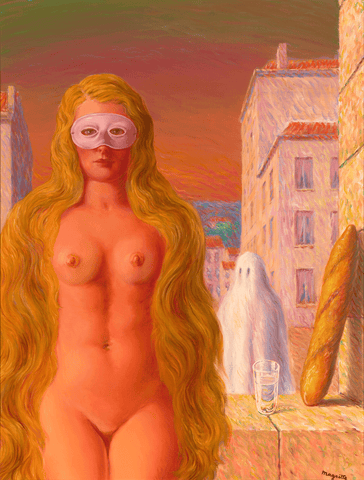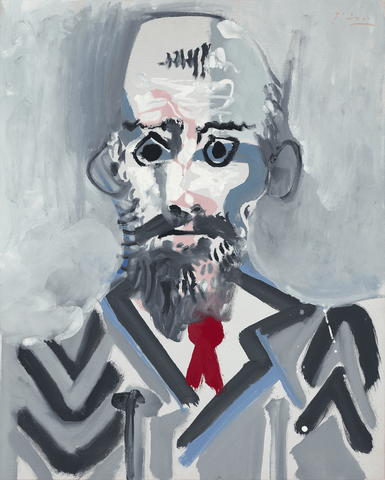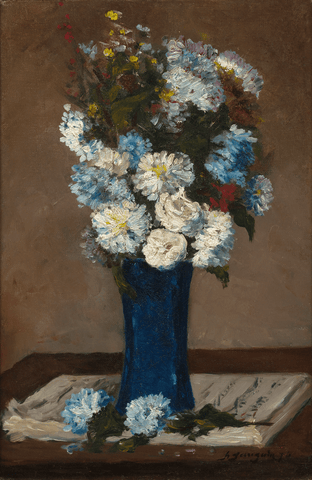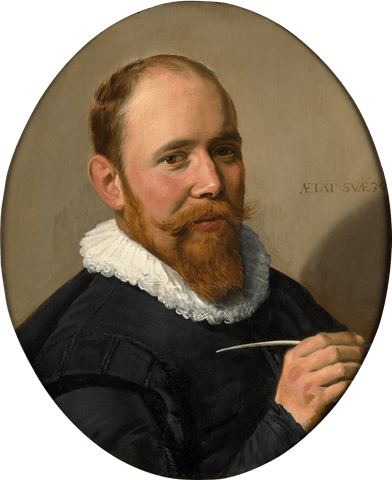Artists
Hassam, Childe
"I believe the man who will go down to posterity is the man who paints his own time and the scenes of every-day life around him."
-Childe Hassam
Regarded as the foremost American Impressionist, Childe Hassam holds a highly important place in American art history. A great synthesizer of ideas with an extraordinary natural talent, Hassam brought together his distinctively American subjects with a more European artistic sensibility, effectively helping to disseminate the ideals of the Barbizon painters and the Impressionists to American audiences. He was as talented in watercolors and prints as he was in oil paintings, while the quality and sheer variety of his output placed him at the top of his class in every category.
From blooming New England gardens to quaint domestic scenes to bustling flag-lined city streets, Hassam captured his America with an impressionistic eye for the fleeting moment. His unique expression of his patriotism dominated his oeuvre throughout his career, while his adaptation of the French and American styles continues to resonate with modern audiences.
CHILDHOOD AND EDUCATION
Hassam was born on October 17, 1859 in Dorchester, a suburb of Boston in Massachusetts. His family had emigrated from England in the 17th century with their original family name Horsham, which changed to Hassam over time. His father was a merchant whose business was wiped out during a disastrous fire in November 1872. Though he had shown an early penchant for art, he was forced to drop out of high school at the age of seventeen and seek employment to help his family.
He found a position in the accounting department of the publisher Little, Brown, and Company, though he was soon fired as it became apparent finance was not his strength. Instead, he became an assistant to the wood engraver George Johnson, drawing designs for the popular illustrator. His new position would set the course of Hassam's aesthetic as he developed his skills as a draftsman.
EARLY CAREER
After two years studying under Johnson, Hassam moved to Boston and became a freelance illustrator. He also found more time to paint outdoors, producing watercolor landscapes in and around Boston. In the fall of 1882, he held his first full-scale exhibition displaying 50 watercolors at Williams and Everett, a popular Boston gallery. Evoking the style of the French Barbizon school, these early works featured atmospheric, tonal country landscapes and dense forest scenes.
His fervor for his craft only continued to grow, and Hassam enrolled in classes at the Lowell Institute and the Boston Art Club in order to further his training. He embarked on his first trip to Europe in 1883, spending time in the United Kingdom, where he particularly admired the watercolors of J.M.W. Turner. Traveling on to France, the Netherlands, Switzerland, Italy and Spain, Hassam would study old masters as he infused American impressionism into European watercolor landscapes. While he spent a brief period in Paris, it would be three more years until his career-changing encounter with French impressionism.
THE FRENCH INFLUENCE
After a brief stint back in Boston, Hassam spent three years in Paris beginning in the autumn of 1886. He could not have arrived at a better moment. The Impressionists had, by then, firmly established themselves as an acceptable artistic style - it was twelve years after the first groundbreaking Impressionist exhibition had initially brought Monet and Renoir into the spotlight. Post-impressionism was now quickly gaining ground - Georges Seurat was putting the finishing touches on his painstaking Pointillist masterpiece A Sunday Afternoon on the Island of La Grande Jatte, while just a year before Vincent van Gogh created his early psychological masterpiece The Potato Eaters.
It was into this context that Hassam entered the French art scene, studying at the Academie Julian and embarking on a series of urban street scenes. His first notable work from the period, entitled Cab Station, Rue Bonaparte, was exhibited at the Salon of 1887, earning him critical acclaim. By 1889, he had sent three dozen works back to a gallery in Boston, all of which achieved popular and critical success. That same year, he won a bronze medal at the Exhibition Universelle in Paris.
AMERICAN MASTER
When he returned to Boston in 1889, he returned a new artist. He had successfully shrugged off the lasting influence of the French Barbizon school, with its tonal palette and muted atmosphere, in favor of the light-drenched, swift brushwork of the Impressionists.
Though he was an avid traveler throughout his career - from Boston to California to Paris to Italy - he remained most fascinated with locales closer to home. He moved to New York City soon after returning from Paris, and relished in the bustling urban streets of his new home. Winter in Union Square (Metropolitan Museum of Art), his oil on canvas painting of the famous New York neighborhood, epitomizes his fondness for intimate cityscapes. Yet, he also became fascinated by the historic charm of New England towns, particularly Gloucester, Greenwich, and Old Lyme. Time and again he captured their rustic cottages and local townsfolk. Ladies at leisure in domestic settings, city visitors strolling along boardwalks, clapboard cottages, fishermen on the wharf - this was Hassam's America.
From that point onward, Hassam's style became more and more Impressionistic. In 1897, he became involved in a group of American painters known as "The Ten" - a movement of painters who seceded from the Society of American Artists, which they viewed as too conservative. Hassam was a driving force of the organization, along with John Henry Twachtman and J. Alden Weir, though Hassam was widely considered the most radical of the group due to his highly modern style. They would exhibit their fine art together in New York, Boston, Philadelphia, and other American cities for twenty years.
A FINAL PATRIOTIC SERIES
Hassam continued to paint landscapes for the next two decades until the patriotic whirlwind of World War I swept into his life. He became actively involved in the war efforts beginning in 1915, and his experiences became an important source of inspiration for the artist late in his career. The result was one of the greatest series of canvases he ever composed, his famed Flag Series.
“I painted the flag series after we went into the war. There was that Preparedness Day, and I looked up the Avenue and saw these wonderful flags waving…”
-Childe Hassam
The Preparedness Parade took place on May 13, 1916, and it was the first major public display of American involvement in the war efforts. Around 137,000 people joined the parade, which traveled down Fifth Avenue and lasted nearly 13 hours. American flags lined the street, hanging from nearby buildings and fluttering the wind in a colorful display. Hassam's studio, coincidentally, was at the end of the parade route - looking out his window, he glimpsed the historic moment unfolding in a burst of color, movement and emotion. Capturing the spectacle on canvas, Hassam produced his first of nearly thirty paintings in his Flag Series that day.
His passion for his country is felt throughout his oeuvre, in both its rural and urban splendor. He died in East Hampton in 1937, lauded as the “Dean of American Painting.”
Browse Childe Hassam paintings for sale at M.S. Rau.










